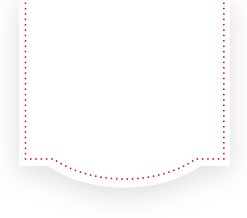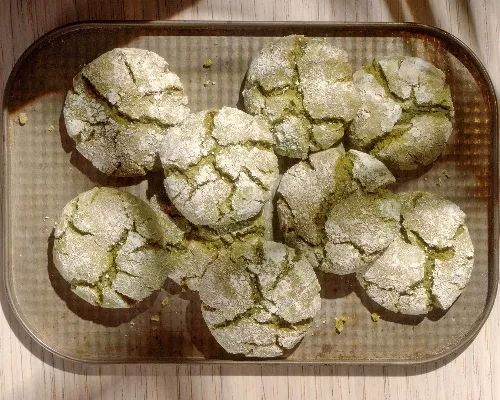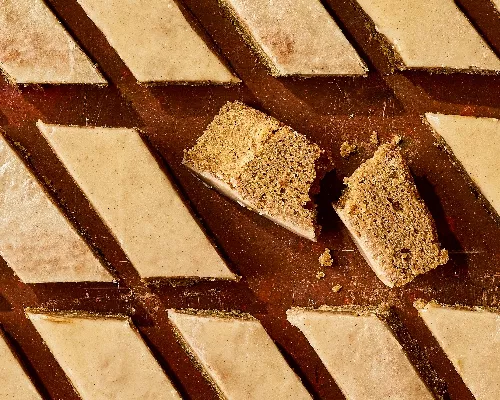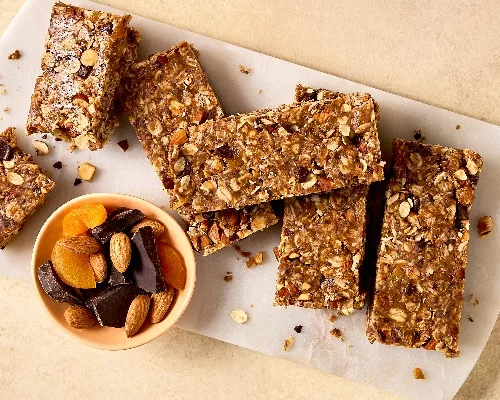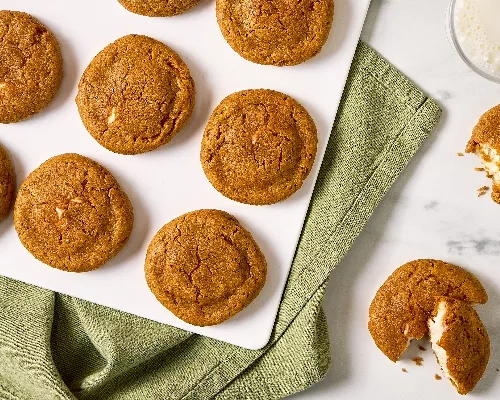Step 1
In a medium bowl, whisk together flour, salt, and baking powder until well combined. Set aside.
Step 2
In the bowl of a stand mixer with the paddle attachment, cream together butter, the Redpath® Dark Brown Sugar, and the Redpath® Special Fine Granulated Sugar until pale and fluffy; about 3 minutes.
Step 3
Add the lightly beaten egg and yolk and mix until fully incorporated into the butter mixture; about 1 minute.
Step 4
Add vanilla extract and blend until thoroughly combined.
Step 5
On low speed, add about half of the dry mixture to the bowl until just combined. Add the remaining flour and mix until it forms a dough; do not overmix. Transfer dough onto a flat work surface and form the dough into a flat disc. Wrap dough in plastic wrap and chill in the fridge for 1 hour.
Step 6
When ready to use, allow dough to come to room temperature; about 5 minutes.
Step 7
Preheat oven to 375°F (191°C). Line two large baking sheets with parchment paper.
Step 8
Divide dough in half. Half of the dough will be used for the bottom and top cookies. The other half will be for the centre cookies with holes cut out of them.
Step 9
Place half the dough between 2 sheets of parchment. Roll dough to a ⅛-inch thickness. Using a 3-inch round cookie cutter, cut out cookies.
Step 10
Place the other half of the dough between 2 sheets of parchment and roll to ¼-inch thickness. Using the same 3-inch cookie cutter, cut out cookies. Using a 2-inch round cookie cutter, cut out the centres of the thicker cookies. Scraps can be gathered and rerolled and cut. Ensure that there are twice as many solid round cookies as there are middles (the cookies with a hole in the middle). For example, if there are 10 cookies with holes, there should be 20 solid round cookies.
Step 11
Transfer all the solid cookies onto one of the prepared baking sheets. Carefully transfer the ones with the cutouts onto the other. Place cookies into the fridge or freezer to chill before baking; about 10 minutes. Place cookies into the preheated oven for 10 to 12 minutes or until lightly golden in colour. The solid cookies may take longer to bake than the cookies with holes.
Step 12
Cool for 5 minutes on the baking sheet. Carefully transfer to a wire rack to cool completely.
Step 13
Meanwhile, make the royal icing according to the directions in the recipe. Place icing into a piping bag fitted with a small round tip (or just snip off the tip when ready to use).
Step 1
Separate half the solid cookies; outline and flood each cookie with royal icing. These will be the tops of the finished cookies. Place onto the wire cooling rack to set and dry; minimum 2 hours.
Step 2
Place the remaining undecorated solid cookies back onto the parchment-lined baking sheet. Flip them so that the undersides are facing up. Pipe a ring of royal icing around the edge of each cookie. Place a “ring” cookie (the one with a hole in the centre) onto the royal icing to “glue” the two cookies together. Repeat the process until all the rings are attached to a bottom cookie. Using a small spoon, fill the hole of each cookie with a teaspoon or so of sprinkles.
Step 3
Pipe another ring of royal icing onto the ring cookie and carefully cover the sprinkle-filled cookie with a top cookie. Repeat process with the remaining cookies. Allow cookies to finish drying.
Step 1
Place 2 teaspoons (10 ml) of vodka into each of 7 very small bowls. Using a toothpick, add a few drops of gel food colouring into each bowl; one colour per bowl. Add more gel and stir until the desired colour and consistency are reached; it shouldn’t be watery or too thick. Add a drop or two of vodka if it is too thick or gel colouring if it is too thin.
Step 2
With the cookies on the parchment-lined baking sheet, place the sheet onto a work surface and cover the surrounding area with newspaper; this will prevent splatters and make it easier to clean up.
Step 3
Use a clean pastry brush or new toothbrush, and dip the bristles into one of the food colourings. Run the tip of a clean finger across the bottom of the bristles and flick the food colouring onto the cookies. (You may wish to practice a few times on a piece of parchment paper or newspaper before trying it out on the cookies.) Alternatively, use a food-safe paintbrush, dip the paintbrush into one colour and with the brush almost parallel (slightly pointing down) to the cookies, use your other hand to tap your wrist to “shake” the colour onto the cookies. Use a toothpick to drop heavier splatters onto the surface. Once all the cookies have the desired amount of speckles, allow the colour to dry slightly to prevent colours from bleeding into each other too much; 5 to 10 minutes.
Step 4
Meanwhile, wash the brush well and pat dry with a clean kitchen or paper towel, and dip into the next colour (see Chef’s Tips). Repeat process until all cookies have been splattered with all the colours.
Step 5
Place onto a wire cooling rack or baking sheet until completely dry before serving; 6 hours or overnight.

*Ensure all ingredients are at room temperature before proceeding with the recipe.
*Redpath® Golden Yellow Sugar can be substituted for the Redpath® Dark Brown Sugar. Note that the resulting cookies will have a less pronounced caramel undertone and may be lighter in colour.
*If serving to children or those who do not consume alcohol, use water or clear vanilla extract to dilute the gel food colouring for the paint splatter.
*If available, use different food-safe paint brushes for each colour, as a drier brush produces a better splatter effect. Or, if possible, alternate between 2 or 3 brushes to allow some drying time between colours.
*Alternatively, you can add food gel colouring to the remaining royal icing and decorate the cookies with different coloured icing instead of speckling the cookies. Or, while the tops are still wet, sprinkle the tops with sprinkles.
*Change the colours and the colour of the sprinkles to match the theme of any event that you may be celebrating, such as a gender-reveal party.

